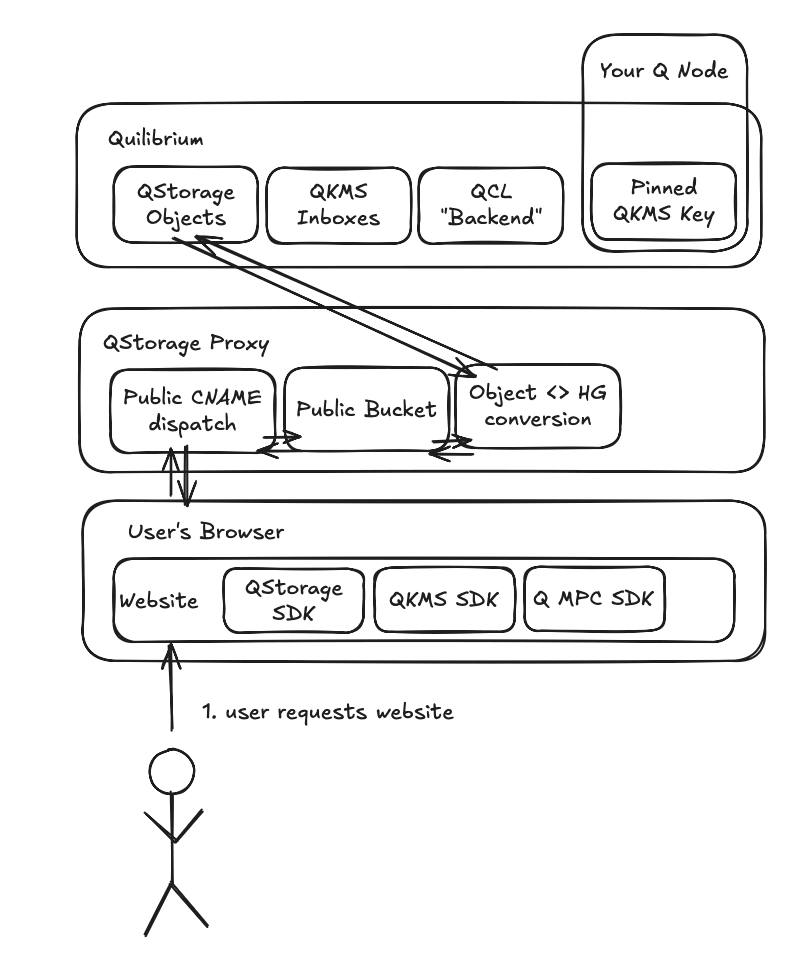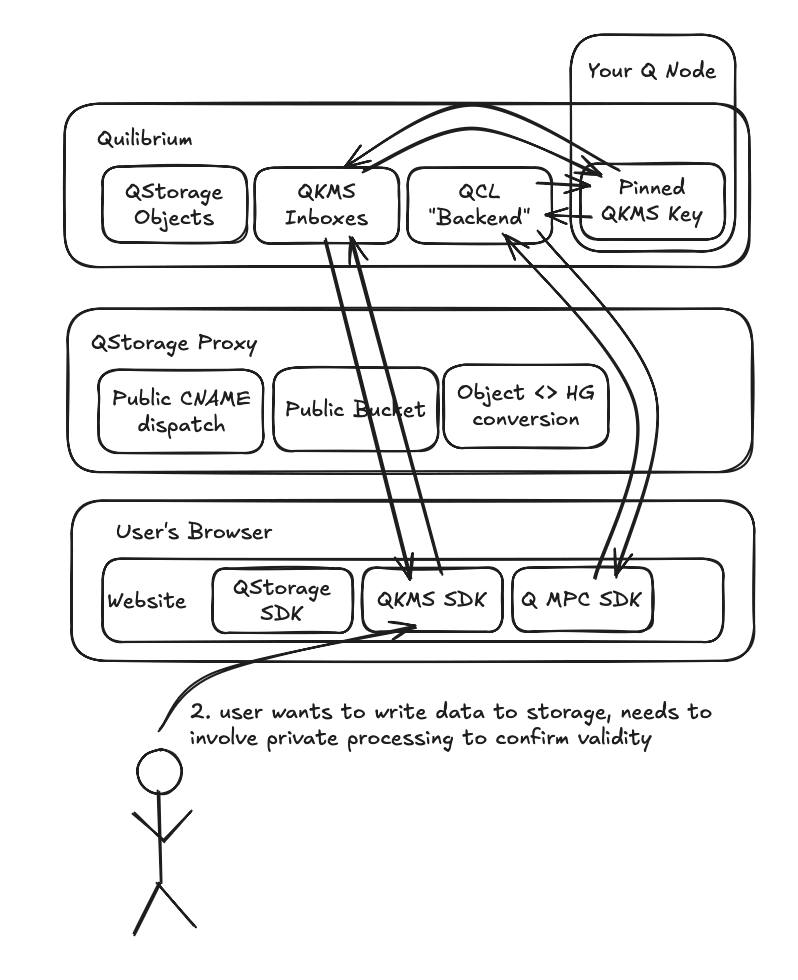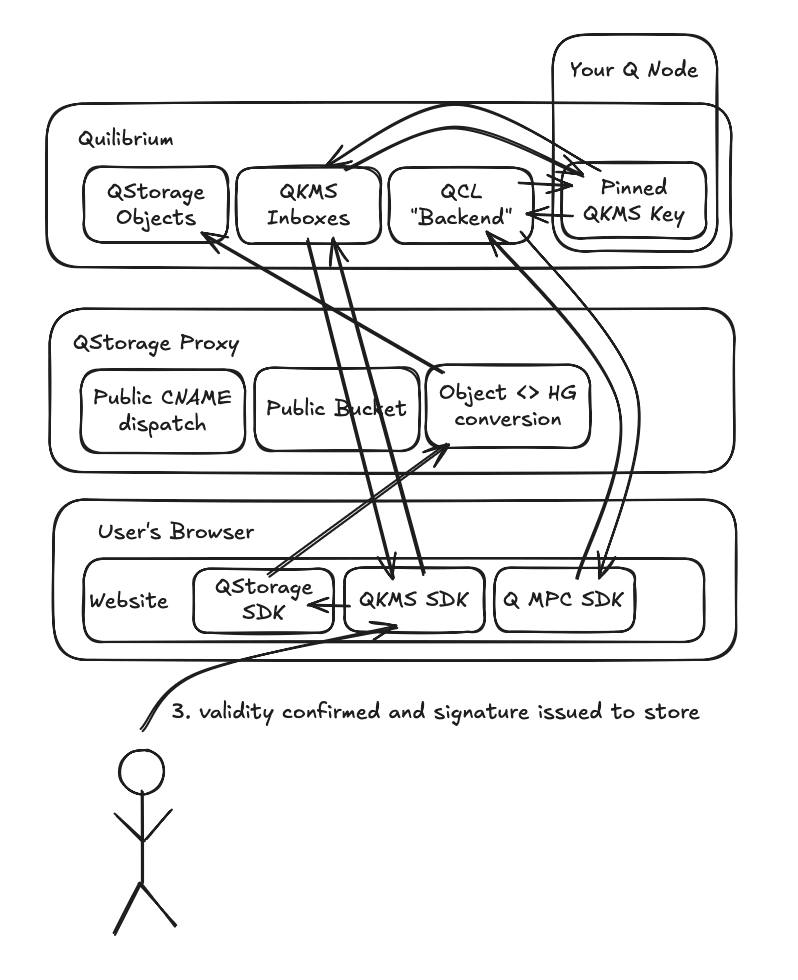Hosting Websites on Quilibrium
Quilibrium offers a flexible environment for hosting both static and dynamic websites, leveraging decentralized storage and computation primitives. Here's how it works:
Hosting Static Websites
If your website is static (HTML, CSS, JavaScript), you can simply upload the files to QStorage, Quilibrium’s decentralized object storage system. Once uploaded, your site will be served through a QStorage Proxy. This proxy handles public CNAME dispatch, making your website accessible through a standard web URL.
At the DNS level, you initially point your domain to the proxy endpoint. In the near future, Quilibrium will introduce MPCTLS, a mechanism allowing you to bind your domain's A records directly to a Quilibrium node, enhancing trust and decentralization.
No backend server is needed for serving static content.
Building Dynamic Websites
Dynamic behavior — like reading from or writing to storage, or performing private computation — is handled differently. Rather than maintaining a traditional backend server, your frontend can communicate directly with Quilibrium services using the provided SDKs:
- QStorage SDK: for interacting with stored objects.
- QKMS SDK: for managing key-based authentication and authorization.
- Q MPC SDK: for private, multi-party computation if needed.
This approach lets you build full-featured dynamic applications without traditional cloud servers.
If you only need basic data storage and retrieval, you can accomplish everything through the SDKs — no QCL code is required.
However, if your application needs private validation (such as verifying conditions before writing data), you can optionally deploy small programs written in QCL.
QCL is Quilibrium’s computation language, designed for privacy and verifiability. It supports a curated subset of the Go standard library, focused on cryptographic, encoding, and mathematical operations.
When a user interacts with the system, the full flow looks like this:
1. User requests the website

2. User attempts to write data, triggering private validation

3. Validation succeeds and data is stored

These steps illustrate how the browser, the storage proxy, the QKMS service, and (optionally) QCL computation all cooperate to maintain data integrity without needing a centralized backend.
Handling Authentication
When users write data (for instance, uploading files or submitting forms), authentication must be handled carefully. Instead of a centralized backend issuing tokens, Quilibrium uses QKMS keys pinned to nodes to manage secure operations. Your application signs requests locally using the QKMS SDK, and the network verifies them against the pinned key.
Running your own Q node gives you full control over key management. Alternatively, you can delegate this responsibility to Q Inc services if you prefer a managed solution.
Summary
For static sites, Quilibrium behaves much like a decentralized S3 bucket with a proxy.
For dynamic functionality, it replaces backend servers with secure SDKs and optional QCL programs for private logic — allowing your app to remain fully decentralized, yet dynamic and interactive.